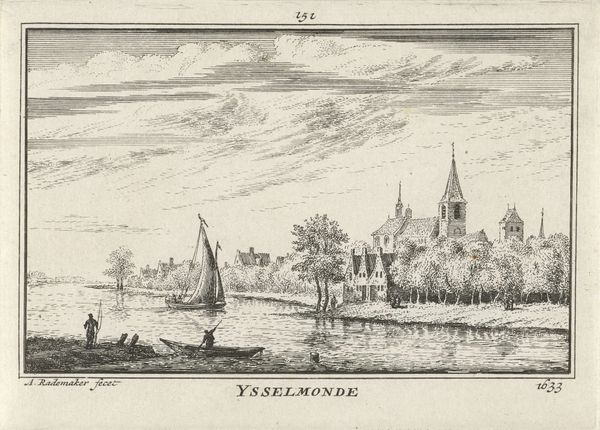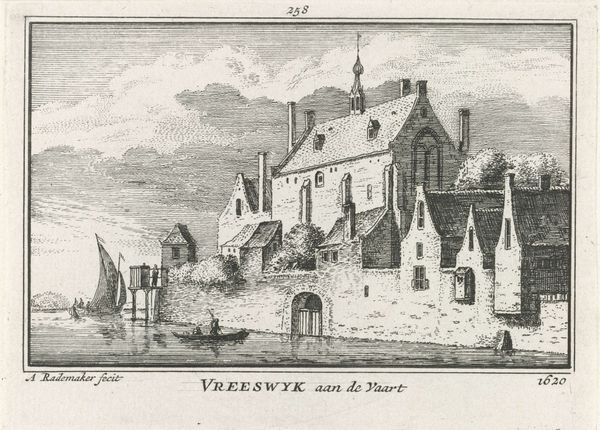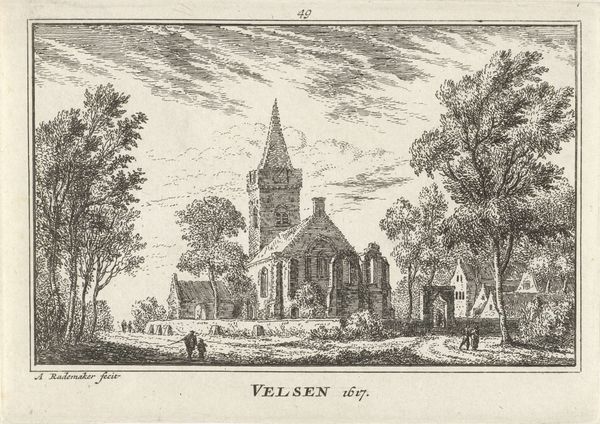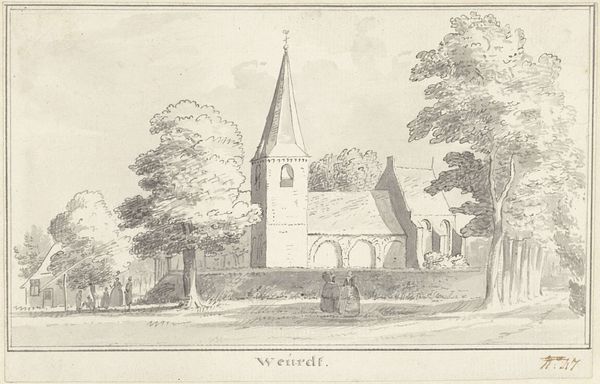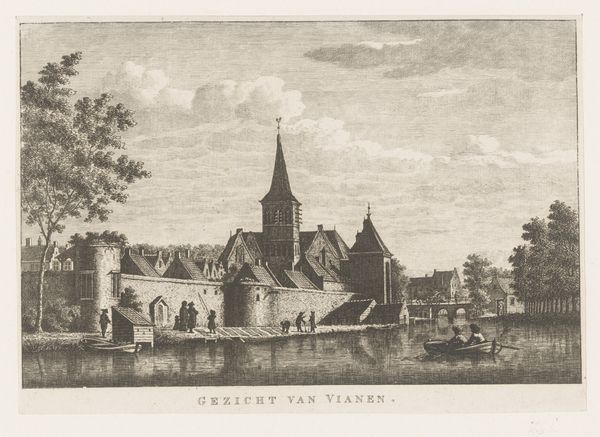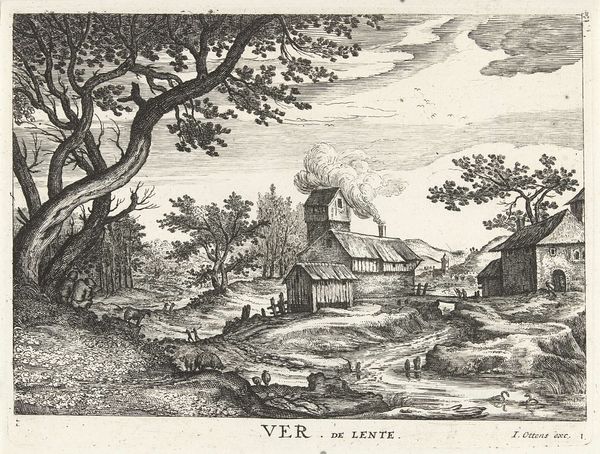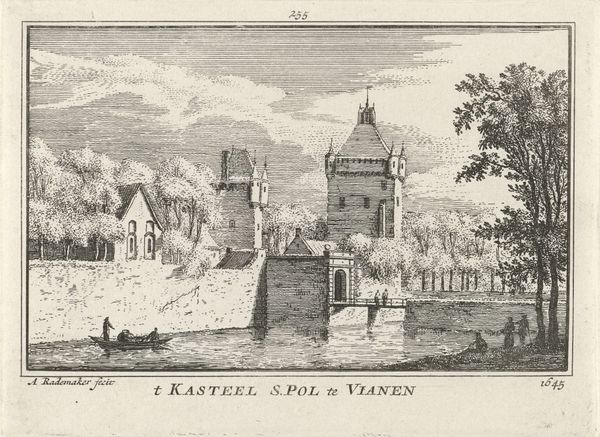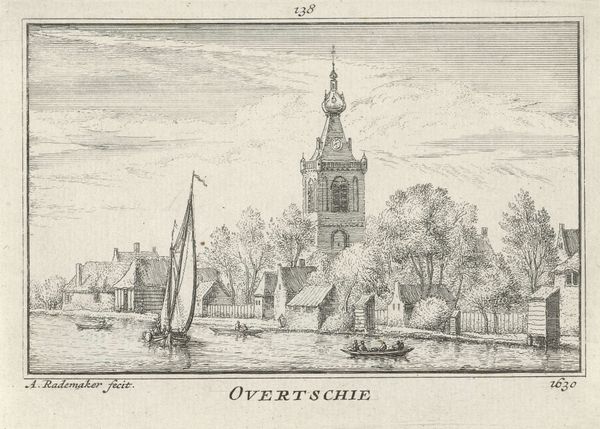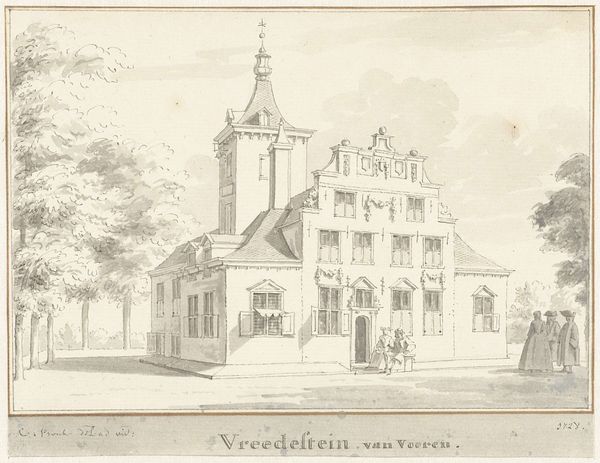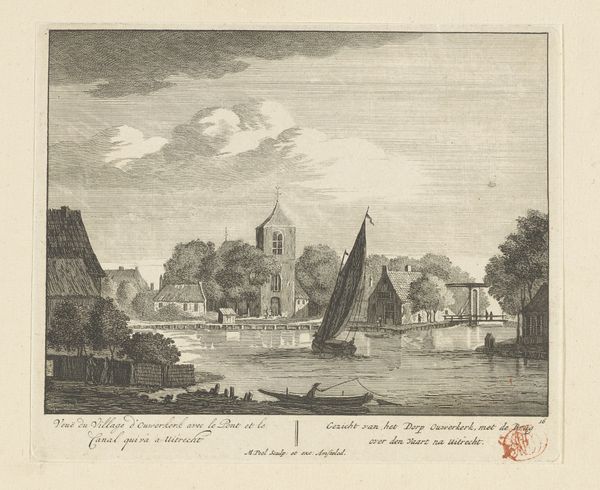
print, engraving
#
baroque
#
dutch-golden-age
# print
#
landscape
#
cityscape
#
engraving
Dimensions: height 80 mm, width 115 mm
Copyright: Rijks Museum: Open Domain
Curator: Well, this is Abraham Rademaker's "Gezicht op Jaarsveld, 1610," dating from sometime between 1727 and 1733. It's currently held here at the Rijksmuseum, and the medium is listed as print, specifically engraving. Editor: It evokes such tranquility, doesn’t it? A little Dutch village reflected serenely in the water. There’s almost a tangible sense of calm that emanates from those finely etched lines. Curator: Engraving, yes. Consider the artisanal skill that went into each of those lines, carved into a copper plate, inked, and then pressed onto paper. The labor-intensive process in itself speaks to a specific type of viewership and material value. It circulated within a developing Dutch economy fascinated by its local scenes. Editor: Absolutely, and these architectural structures like that church tower piercing the skyline become cultural signifiers. Churches are so symbolic, aren't they? Here it dominates, suggesting a strong religious influence and perhaps civic pride. But also consider how landscape is used here - water motifs can have connections to purifying processes and journeys. Curator: Though I think Rademaker gives us just a facade of rural innocence here, a market was being cultivated for views like this among urban audiences who were starting to find pastoral scenery appealing in engravings just like this one. Let's look closer. What does it depict that provides hints about life in the area? The boats seem important here for trade! Editor: Boats representing more than trade, potentially symbolizing the voyage of life, and passengers as people moving through time. Plus, Jaarsveld as a place, maybe standing in for the entire Dutch identity: resilient and reflective in the Golden Age. Curator: The level of detail in such a small-scale work indicates how the burgeoning print market allowed artisans to explore and represent specific locales in a manner accessible to the increasingly wealthy burghers of the time, contributing toward a certain conception of Dutch identity itself through readily purchased artwork.. Editor: A cultural touchstone then! Even though "Gezicht op Jaarsveld, 1610" is physically modest, its layered meanings invite endless reflections on the symbols within. Curator: A convergence of materiality and image production that reflected a culture undergoing dynamic shifts both socially and commercially. Editor: It definitely gives us more to chew on than just meets the eye, even now.
Comments
No comments
Be the first to comment and join the conversation on the ultimate creative platform.
